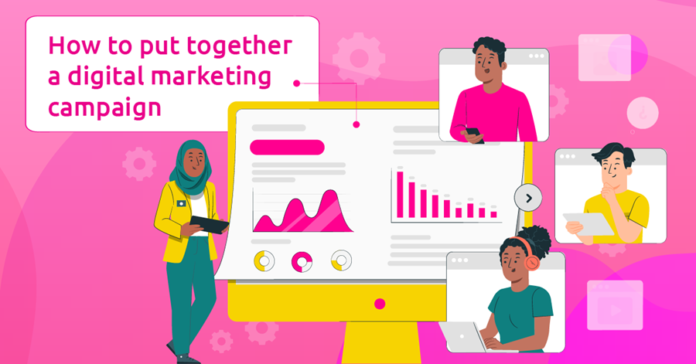Gail Tanner, business unit lead at Flow Communications, says that if you are planning a digital marketing campaign, you should start by deciding on the one big, powerful message you want to drive home.
Here are 10 top tips to plan and execute a top digital marketing campaign:
1. Establish what you want to achieve
Do you have a candle business and want to sell more products? Do you want to grow your company’s Facebook page? Do you want to increase the number of registrations for an event you’re hosting? Or do you want to make a tangible difference in the fight against climate change? Whatever it is, decide what the main goal is that you want to achieve with your campaign before you move on to the next step.
2. Set specific targets
Based on your main objective, consider what you want to achieve. Would gaining just two new clients make a difference to your business, or do you want to secure 500 event registrations? Remember, your targets should be realistic and achievable. An easy way to ensure that you can achieve your targets is by making them ‘SMART’: specific, measurable, achievable, realistic and time-bound.
3. Define your audience
Make sure you know exactly who you want to speak to. Is your target audience male or female, or both? Do they have a tertiary education? Are they parents? Are you targeting people working in a specific industry, or with particular interests? The tools that online platforms provide mean you can be very specific when you set your target audience. On LinkedIn, for example, you can stipulate that you’re targeting users with, say, a master’s degree, or who work in engineering or fall in a specific age group.
4. Choose the platforms relevant to your audience
Ultimately, you want to send your target audience to your own platform: your website or, perhaps, an article or blog that highlights the key message you want to get across. See that platform as a big, central ‘sun’ in the middle, with all the many available platforms – from Facebook and YouTube to Twitter and TikTok – revolving around it. Then choose a mix of the most relevant platforms out of all those available that fit your audience.
5. Consider your budget
When it comes to budget, the beauty of digital advertising is that you can spend very little (a mere R500 can be enough to get great results from a paid social media post), or a huge amount (you’ll be surprised how much some big corporations fork out on digital campaigns). Are you using an agency to execute your campaign? (It will add a small mark up, but could yield the results you’re after). Also consider the return on investment you’re expecting. If your budget is too low to get a return, your campaign may not be successful.
6. Plan your timeline
You need to plan your timings beforehand so you know you’ll be ready when you launch your campaign, and so you know what needs to happen when during its implementation – but don’t make it too complicated. Draw up a clean, simple timeline with dates, milestones and who is responsible for what.
7. Refine your concept and content
Your concept, content and, vitally, your creative design are the most important elements of your campaign. These tailored elements need to be powerful and punchy, with a consistent message across your platforms. This is where using a specialised, trusted digital marketing agency, like Flow Communications, can really come into its own.
8. Assess the need to use influencers
The influencer space can be intimidating – there are some who will charge up to R100,000 to create just one curated Instagram post and send it out into the world! But you don’t have to pay that, and you can get great engagement when an influencer amplifies your message on digital channels for a much more modest sum. Just remember, it’s vital that any influencer you choose must be closely related to your brand, with aligned values and/or interests. If not, this tactic won’t work. There are different ways to engage influencers. If you’re stuck, it’s a good idea to consult an agency to help you.
9. Smooth implementation is key
Make sure you have all your ducks in a row when it comes to implementing your campaign. Set up access to the platforms you want to use, and ensure that the requisite metrics are being tracked through the various analytics tools provided by these channels. Google Tag Manager, for example, enables you to add and update website ‘tags’ to get better insight into how many people have bought something or registered for an event.
Conversion tracking pixels (tiny pieces of code that can give you information about platform users and whether visitors are coming from paid searches on Google, Twitter or Facebook, for example) can make a difference to the success of your campaign. Emailer campaigns often use a unique link for recipients to click on. This makes a big difference when it comes to assessing and reporting how successful it was.
10. Measure your results
Reporting is important. Once your campaign has run its course, you need to measure how effective it was. You want to know its reach and where your website traffic came from; your performance per social media channel; the interactions garnered (engagement is a much better result than mere ‘likes’ and ‘follows’); your average click-through rate; and the return on investment achieved, among others. Reporting not only shows your results, but also prepares you for your next campaign – it’s essential to know what worked and what could be fine-tuned for the next time around.
FLOW COMMUNICATIONS
www.flowsa.com










